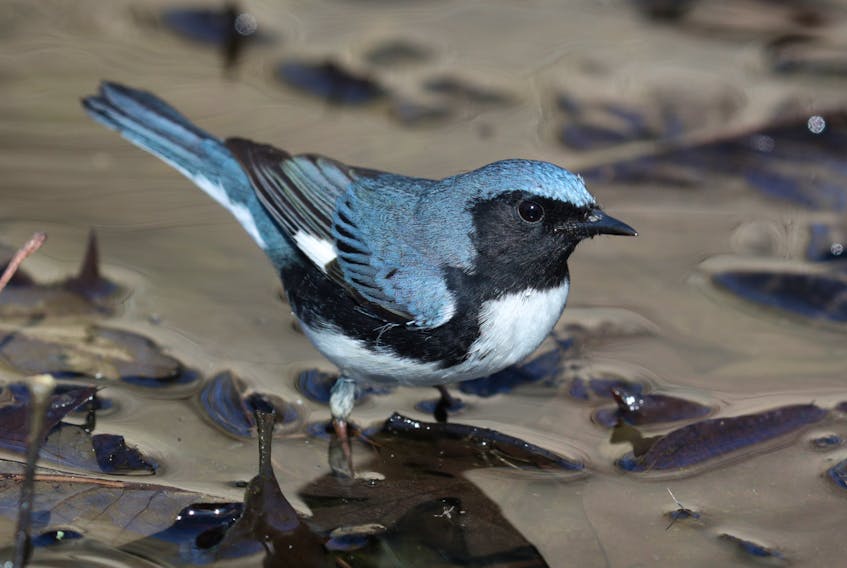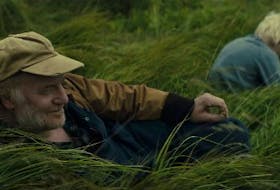Spring in Newfoundland and Labrador can be a painfully slow, drawn out procedure. Two steps forward and one step back during a good week. And one step forward two steps backward in a bad week.

Eventually, all the spring birds do get back and are on their breeding territories by early June. Our woods will come alive with the rich selection of songbirds that come here to nest.
Springtime is when many of us feel the need to escape the weather and go south. After a long winter, spring is just too slow in showing off its lovely birds to us. Birders, like normal people, get the urge to escape. There are lots of nice birds in the south, whether in Florida, Mexico or the Caribbean, but there is another springtime escape for the birder, and it is right here in Canada. It is Point Pelee National Park in Ontario. It is the southernmost point in Canada, with the tip of the point being on the same latitude as the northern boundary of California.
Point Pelee is strategically located on the flyway of many songbirds migrating up through central North America to nesting territories in the boreal forests of Canada. Being a wooded point of land jutting out into Lake Erie and surrounded by farmland, Point Pelee acts an oasis and refuge. It becomes a focus for migrant birds that have just flown across the lake. The overall effect is that Point Pelee attracts a lot of birds in spring migration. This has been known for a long time. In fact, Point Pelee is famous around the world for being one of the best locations anywhere to observe large numbers of birds during spring migration. Point Pelee is where I am as I write this column.
Behind me a rustling in the leaves reveals a gray catbird searching for its breakfast in the leaf litter. I can hear a cardinal whistling in the background.
It was with great anticipation I waited for the two months to pass after booking this trip. It is not my first visit to Point Pelee and will not be my last. The locals are always waiting for that big day with an extra-large fallout of birds descends, usually during bad weather that grounds migrating birds.
For Newfoundland and Labrador birders, there is never a dull day during spring migration at Point Pelee. For instance, this morning I was admiring a spiffy-looking wood thrush on the ground in full view through an opening in the underbrush. Its bright rufous head and bold round black spots were characteristic of the species. It flew off, only to be replaced by a Carolina wren in the same position. This southern bird just makes it into Canada as a nesting species but is common at Point Pelee.
Behind me a rustling in the leaves reveals a gray catbird searching for its breakfast in the leaf litter. I can hear a cardinal whistling in the background. Practically every place you stop, look and listen at Point Pelee, cardinals are there. A rich warbling song is coming from a black and white bird perched in a partially leafed bush. It turns around to face me, showing off the bleeding-heart pink breast patch of the rose-breasted grosbeak.
The warblers are the class act of Point Pelee. Birders who come for a week in May can expect to see up to 30 species of warbler in migration. This includes all the species that are common in Newfoundland and Labrador and as many more again that we rarely see or do not see at all. Rare ones like the black-throated blue warbler, that we treasure so much when it shows up in the province, are easy to see and enjoy at Point Pelee.
Stars for the local birders are the more southern species like the spectacular prothonotary warbler, the flashy hooded warblers, the gob-smacking golden-winged warbler. Other common Newfoundland birds, like the hermit thrush, is just so numerous at times that you can see more in one good day at Point Pelee than you will see in a year or even a lifetime in Newfoundland. Your eyes are constantly in action detecting movements in the bushes. Two birders standing together looking the same way are often seeing different birds. Your auditory functions are working overtime to sift out the songs and calls of the common birds for the uncommon or rare species. This place is for birders; it is a birders’ world. Everyone you see is a birder. They come from all over the world with the same purpose — to see lots of spring birds. Everyone is united by a common cause. People you do not even know or might never see again become your kin for a few minutes as you stand shoulder to shoulder, helping each other get views of a stonking male hooded warbler as it flits about in the underbrush.
Point Pelee is a birder’s living heaven. And, it’s just a four-hour drive from Toronto airport.
Recent columns by this author
BRUCE MACTAVISH: Spring arrives on step at a time
BRUCE MACTAVISH: King of the sky
Bruce Mactavish is an environmental consultant and avid birdwatcher. He can be reached at [email protected].









